
When launched next year, the Australian-developed Ford Ranger will spearhead Ford’s efforts in compact truck markets throughout South-East Asia, Africa and South America. It’s a big deal - in fact, Ford says development of the all-new Ranger was the largest single vehicle development program ever undertaken by the company in Australia.
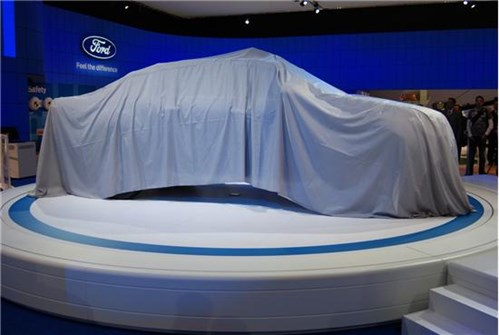
When launched next year, the Australian-developed Ford Ranger will spearhead Ford’s efforts in compact truck markets throughout South-East Asia, Africa and South America. It’s a big deal - in fact, Ford says development of the all-new Ranger was the largest single vehicle development program ever undertaken by the company in Australia.
Compact trucks are a global phenomenon (Thailand is the world’s biggest market for them, followed by Australia) and Ford identified similar customer needs in all markets from here to Argentina. So under the company’s new ‘ONE Ford’ strategy - which leverages Ford resources to bring local and regional products to the globe - Ford Australia was chosen to drive development of the all-new Ranger line-up.
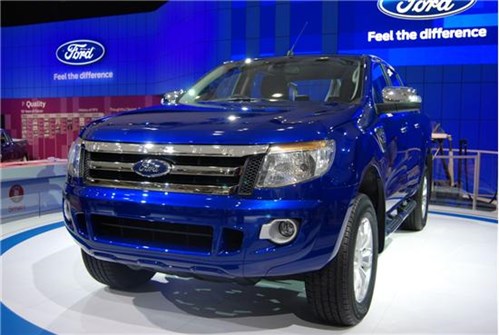
“Compact pickups are hugely important to customers in many regions of the world,” explained Jim Farley, Ford’s Group Vice President, Marketing, Sales and Service. “For many, it’s the only vehicle in a household headed by a hard-working person others depend on. These people need a truck that can get the job done – and they’ll be amazed how Ranger’s smart new technologies make the job easier. And increasingly, they’re also looking for the kinds of features, technologies, spaciousness and refinement you’d expect in a car, and Ranger is just as innovative here.
Beginning next year, the Ranger is headed for sale in more than 180 markets across five continents in – varying from country to country – three different cabs, 4x2 and 4x4, two ride heights and five model grades.
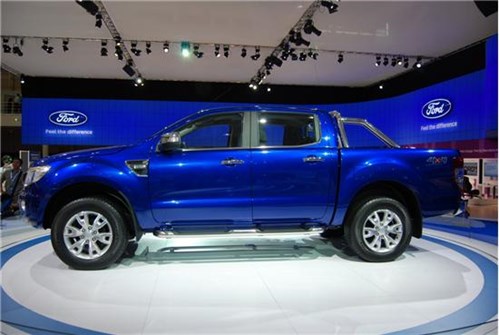
And no question about it, the all-new Ford Ranger will be a game-changer, with available technology including the segment’s first Rear-view Camera system, Rear Park Assist, Adaptive Load Control and Trailer Sway Control. Naturally, new Ford Ranger is also equipped with Ford’s Electronic Stability Control (which includes four-wheel traction control, yaw control and roll-over mitigation) as well as ABS anti-lock brakes with Electronic Brakeforce Distribution.
Visually, the new Ford Ranger looks the part – it’s bold and chiselled and clearly fits alongside Ford’s larger North American F-Series pickups. Chief Designer Craig Metros admitted the funky G-shock watches were a thought-starter when he commenced sketching the latest Ranger: “Something fragile inside, protected by armour,” he said.
The Ranger unveiled in Sydney was the Australian range-topping XLT grade in dual cab – with leather seats and a new 2.2-litre, 110kW/375Nm Duratorq turbo-diesel engine. But the headline powerplant will be a 3.2-litre, five-cylinder turbo-diesel with 147kW/470Nm.
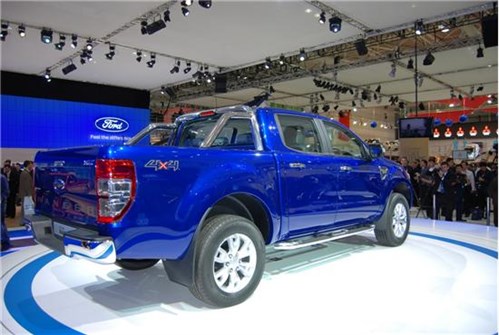
Petrol versions of the all-new Ford Ranger will be powered by an improved 2.5-litre engine with 122kW and capable of configuration to E100 flexible fuel, LPG or CNG.
Leading the transmission choices will be Ford’s new 6R80 six-speed automatic with ‘Normal’ and ‘Sport’ modes plus Ford’s Grade Logic Control which automatically downshifts when it detects the driver applying the brakes on a downhill grade - technology appreciated by those who tow trailers (as many Ranger buyers like tradies do). Diesel models will also feature an available six-speed manual transmission (five-speed for petrol versions).
Like the Mazda BT50, Ford’s all-new Ranger is significantly larger in every dimension than its predecessor – the wheelbase is 3220mm and the track is up to 1590mm (2WD models). That translates into more interior space and cargo space – the double cab XLT displayed had a tub which measured 1549mm (length), 511mm (height), and 1560mm (width) – 1139mm between the wheel arches – all delivering an impressive volume of 1.21 cubic metres.
All-new Ford Ranger rides on a chassis which is 20 per cent stiffer than its predecessor. Front suspension is a coil-over-strut design with different damper and spring rates for 2WD and 4WD models, while the rear features leaf springs tuned for reduced sway and skittishness on dirt roads.
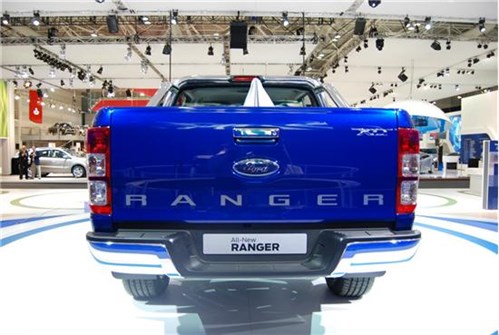
Ford Ranger 4WD models provide ground clearance up to 232mm with key electrical components and air intakes mounted high under the bonnet for impressive water-crossing abilities. Ford says many Ranger customers live in Monsoon climates where flooded roads provide frequent challenges.
Ford Australia’s engineers took the front running in suspension development with extensive testing in Australian conditions and at the company’s Proving Ground in Victoria.
Inside, the new Ford Ranger is a standout with space for five people (dual cab), superb new materials and trim. Storage locations abound (up to 20 locations including under the seats) and a glovebox sized to accommodate a laptop computer.